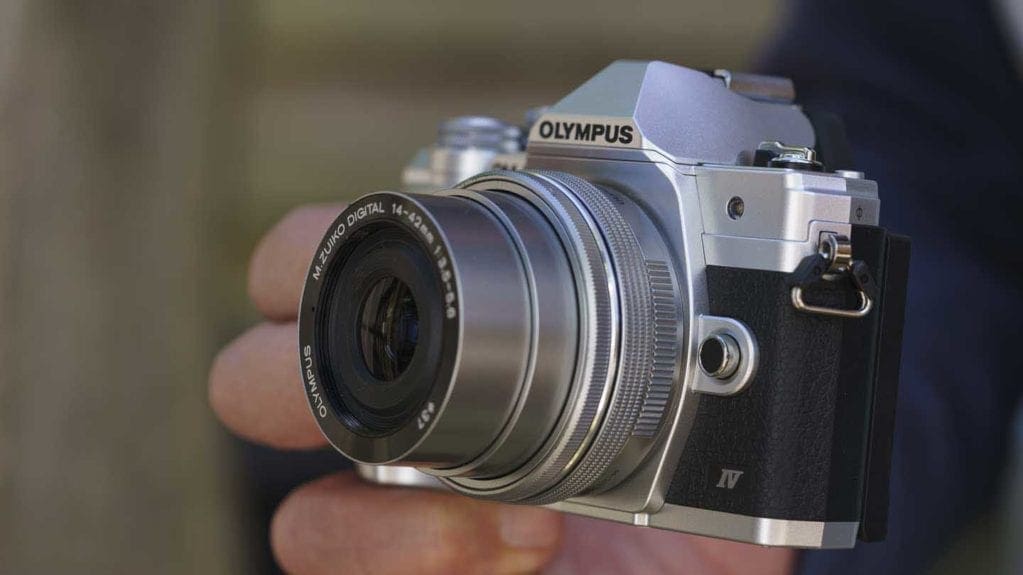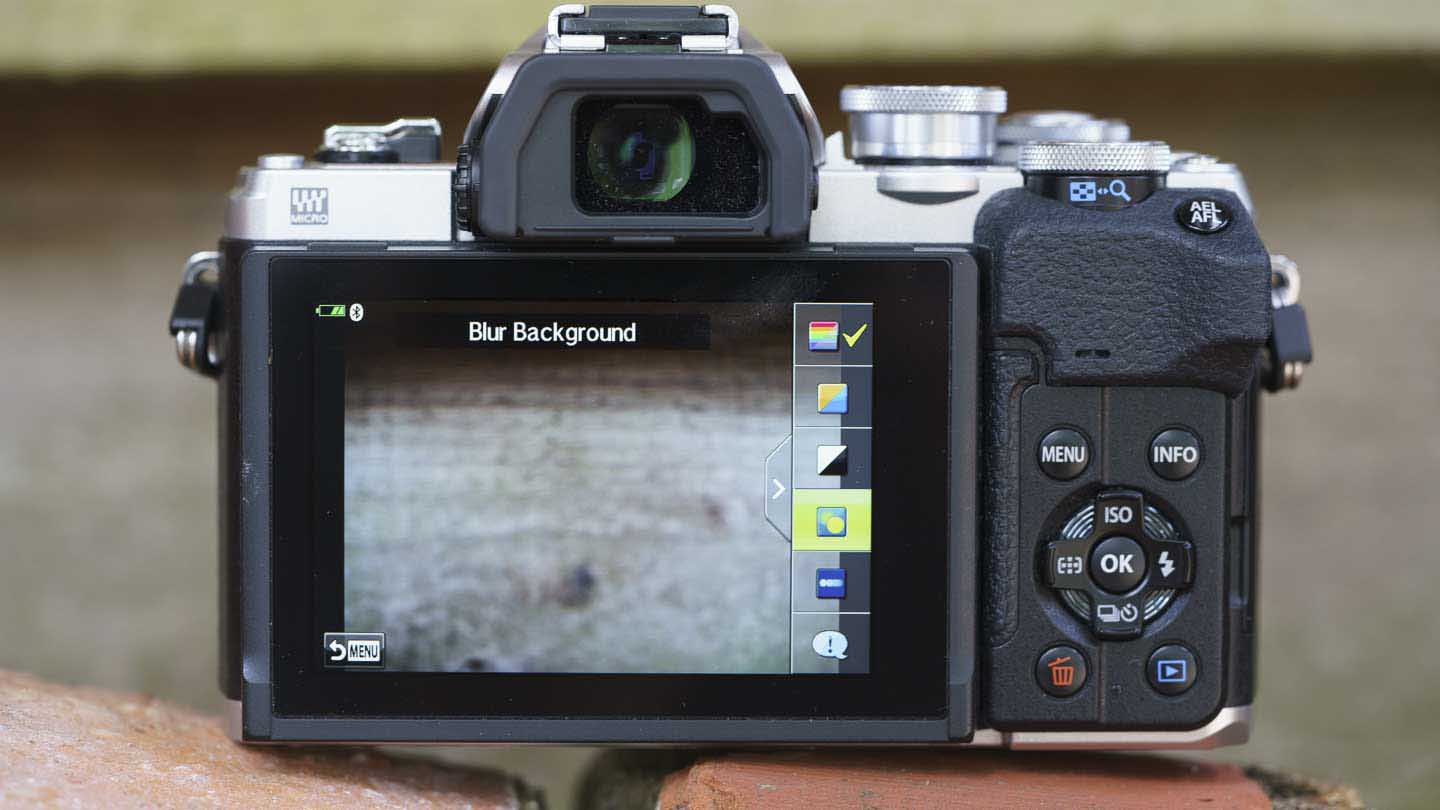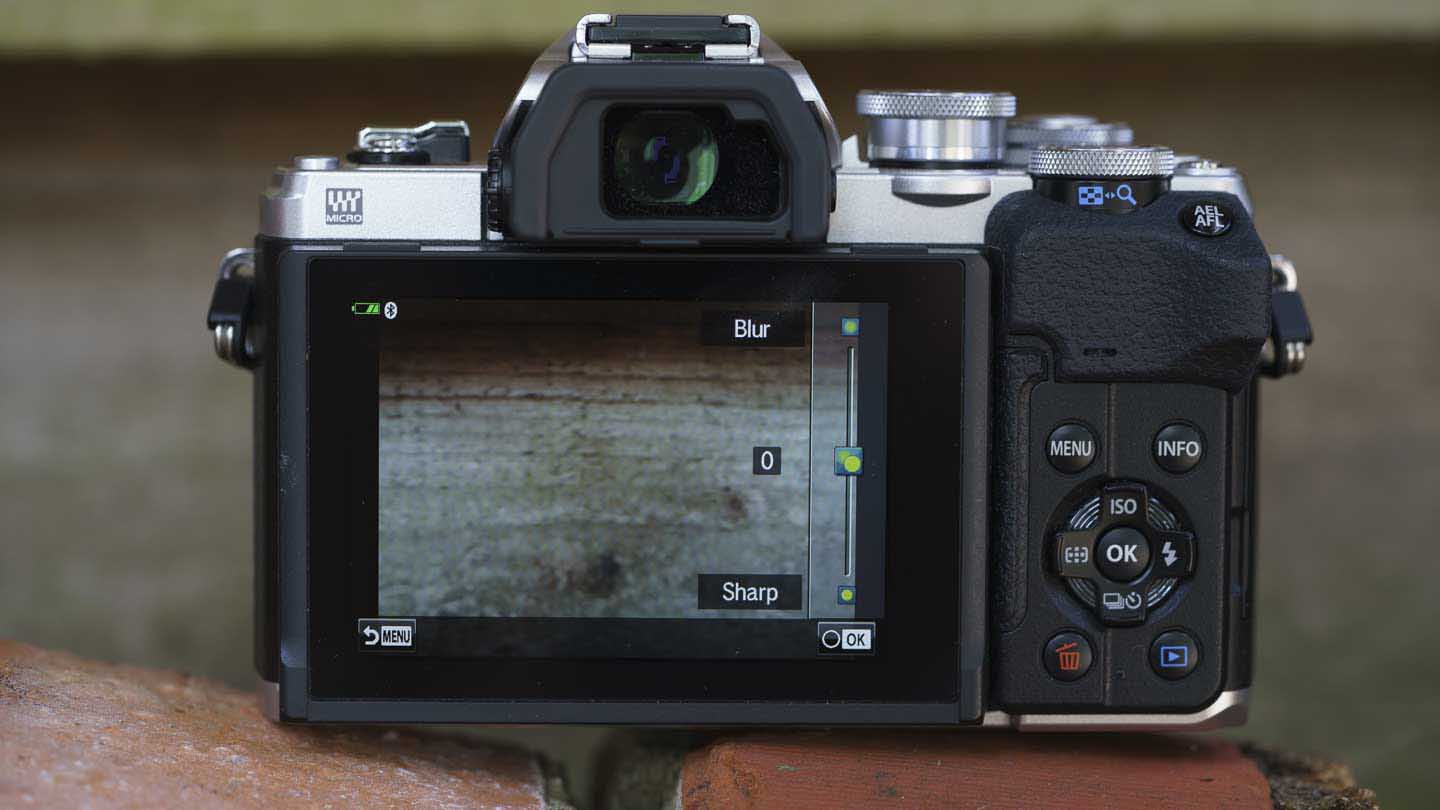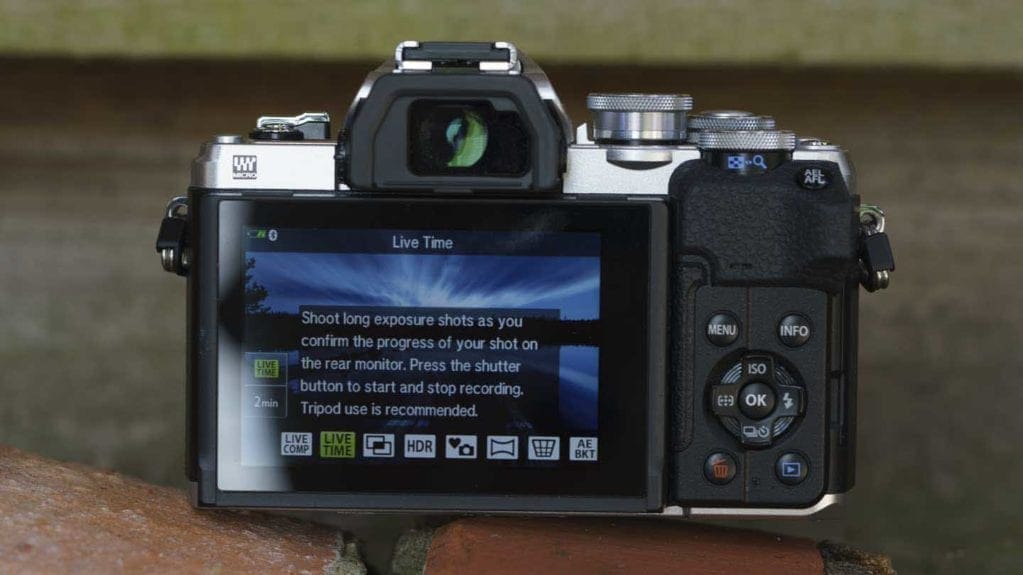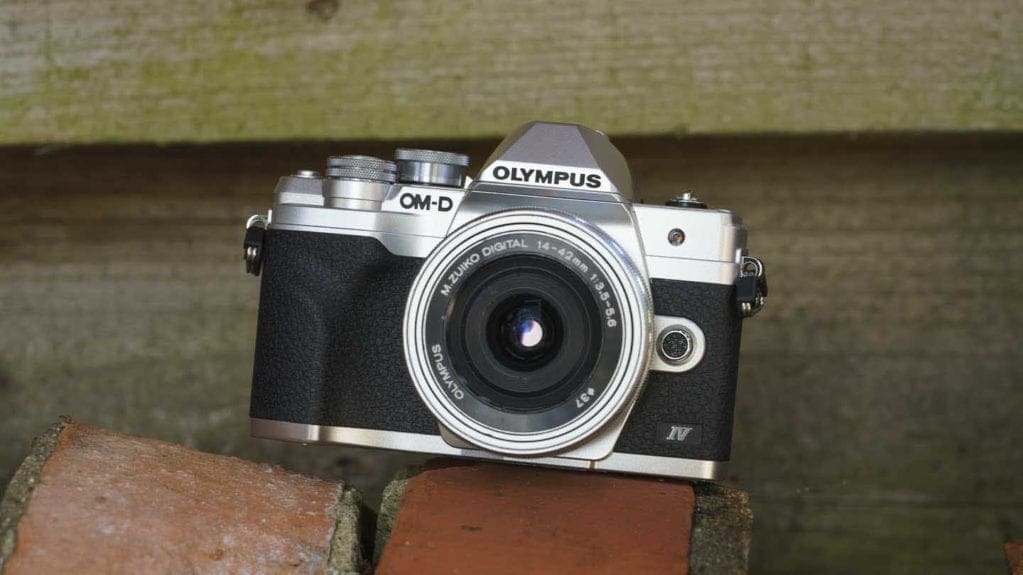Although Olympus has constructed the OM-D E-M10 IV from polycarbonates, it still feels fairly solid and nicely built. It doesn’t have the weather-proof seals of the higher-end OM-D cameras, but it still feels like it would cope with being taken on your travels.
The OM-D E-M10 Mark IV looks almost exactly like the OM-D E-M10 Mark III, but according to Olympus, the grip has been improved. I don’t have a Mark III camera to hand to compare it to, but the Mark IV’s grip is certainly very good with a nice independent that accommodates my second finger while my index finger is on the shutter button.
On the back of the E-M10 IV, there’s also an effective thumb rest. Together with the front grip, it makes the camera comfortable to hold and use one-handed.
If you’re looking for a compact camera set-up, the Olympus 14-42mm F3.5-5.6 EZ lens is the perfect partner for the OM-D E-M10 IV. When the camera is turned off, the lens collapses to pancake proportions, and when you flick the E-M10 IV’s power switch, it extends ready for action. It’s a great combination for everyday photography or travel.
A larger optic like the Olympus 40-150mm f/2.8 Pro lens is a less natural pairing, but provided you support the lens with your left hand while you shoot, it still feels pretty good and gives the 35mm equivalent focal length range of 80-300mm in a compact unit.
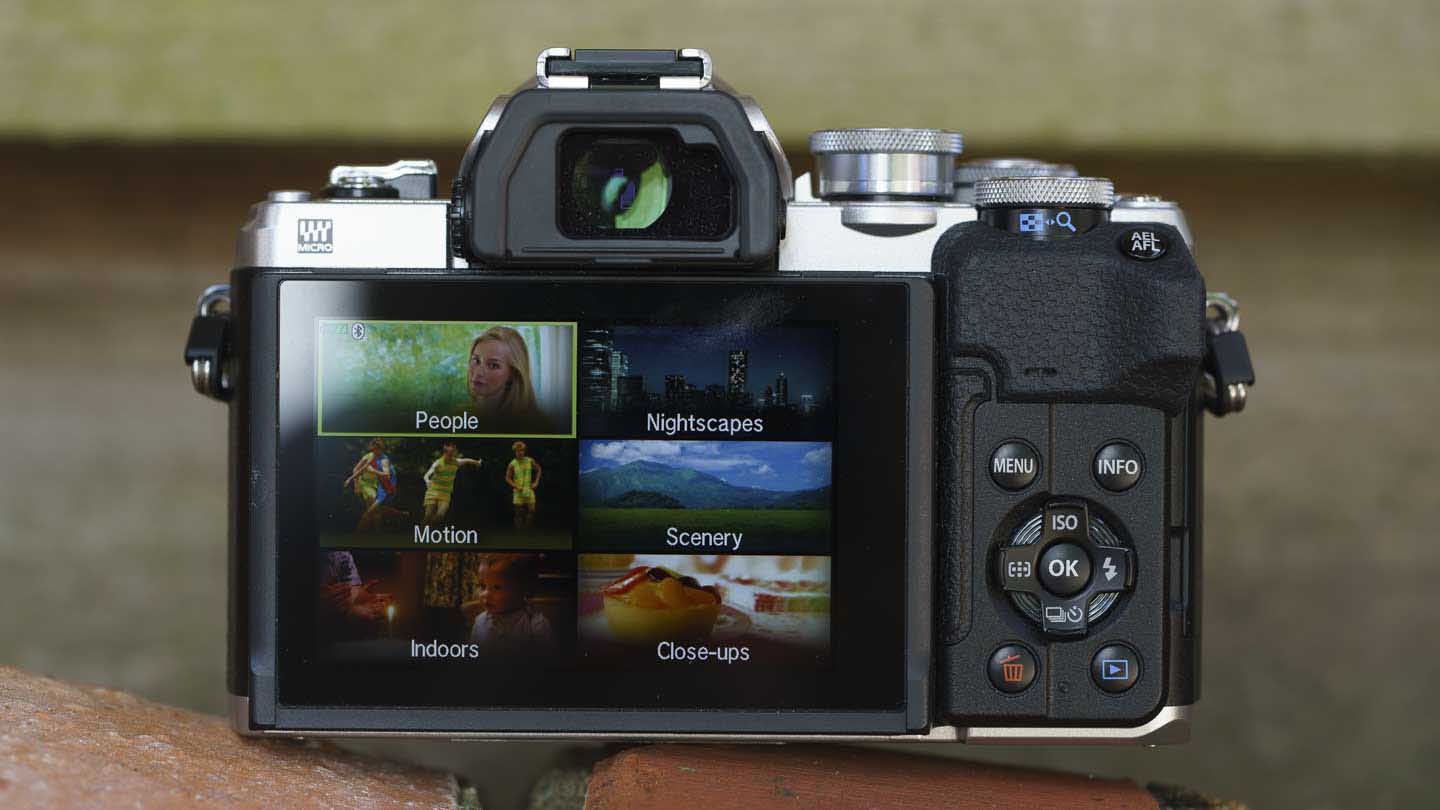
Control Layout
As with Mark III, the OM-D E-M10 Mark IV has knurled metal dials on its top-plate that have a high-quality feel and are easy to use. It’s great to have twin adjustment dials on a camera of this level and size. It means you can adjust exposure directly without having to press a button.
The exposure mode is set via the chunky (by E-M10 standards) mode dial. As I mentioned earlier, this has an AP (Advanced Photo) setting as well as settings to switch to one of the PASM (program, aperture priority, shutter priority, manual) settings, auto, video and Art Filter mode.
It’s also possible to apply the Art Filter effects to images shot in the PASM modes via the menu or the Super Control Panel. That gives you more control over the exposure than you get in Art Filter mode.
Although AE Bracketing and AF Bracketing are available via the Advanced Photo setting, I’m disappointed to see that Art Filter bracketing hasn’t been added to the list. I like the ability to produce a collection of images with different effects applied with just one press of the Sutter release – but it’s not possible with the E-M10 Mark IV.
An option in the menu lets you select whether you see the Live Control or Super Control Panel (Olympus’s version of a quick or function menu) when the OK button is pressed and it can be varied by the shooting mode.
The Live Control panel is selected by default, it shows the controls in a column on the right with the setting options available for the selected item displayed in a row at the bottom. As a rule, I prefer Super Control Panel as it’s easier to see all the features and I find it quicker to use.
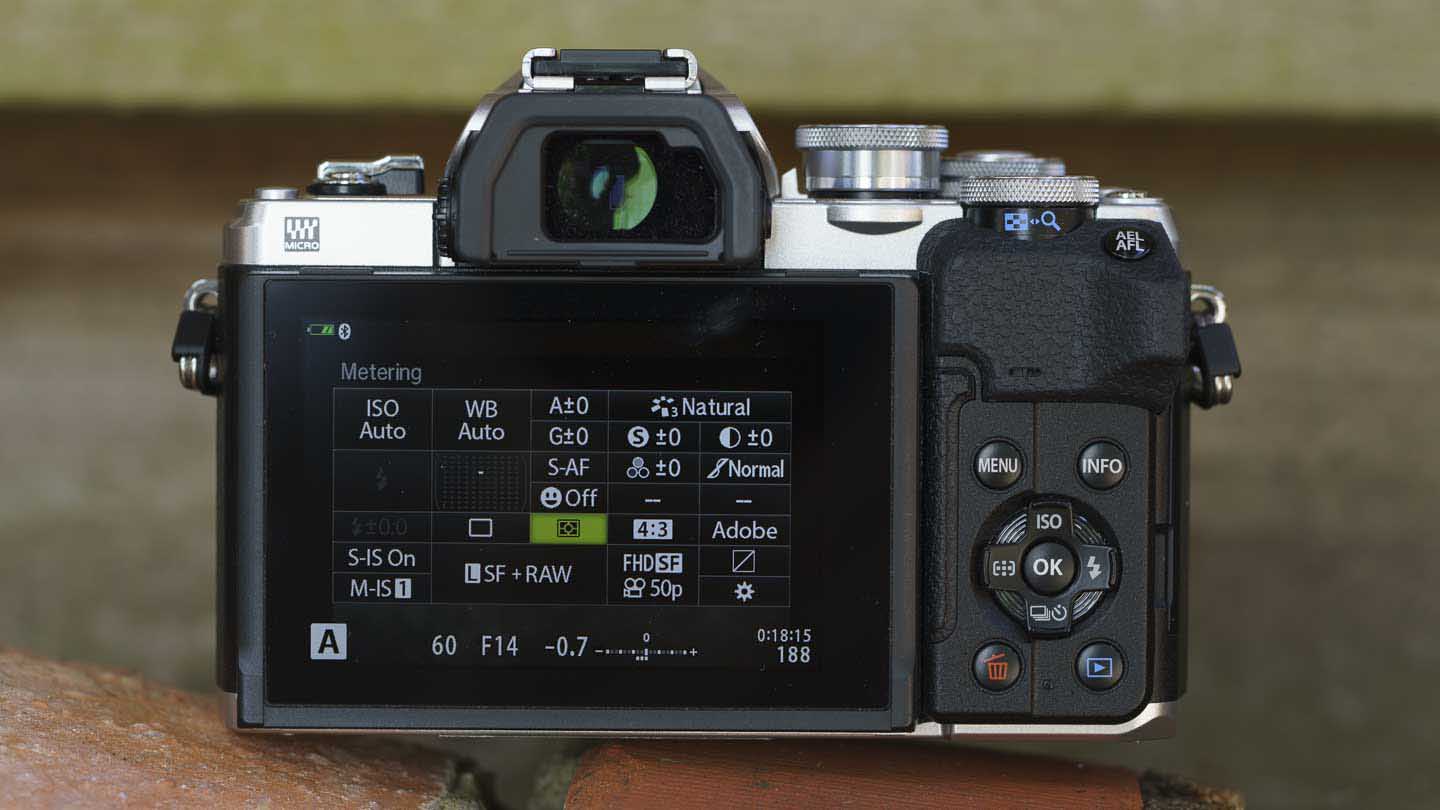
Super Control Panel
Pressing the button next to the power switch on the OM-D 10 Mark IV’s top-plate also brings-up the Super Control Panel in PASM mode.
In the other modes, pressing this button displays the available options. For example, in Scene mode, you see all the scene settings such as People, Nightscapes, Motion and Scenery etc, and in Art Filter mode, you can select the Art Filter that you might want to use.

When Auto mode is selected, a tab appears on the right of the screen. Tapping this or pressing the button again, reveals a column of boxes. This Live Guide helps novice photographers adjust aspects such as white balance, exposure and background sharpness/blur using on-screen sliding controls.
While it’s helpful, it doesn’t tell you what’s being changed so it doesn’t actually teach you about photography or the camera controls.
Screen and Viewfinder
Like the E-M10 III, the OM-D E-M10 IV has a 3-inch 1,037,000-dot touch-sensitive tilting LCD. There are more resolute screens available, but the E-M10 IV’s provides a clear view in all but very bright sunlight and it’s responsive to touch.
As usual with Olympus cameras, the Super Control Panel can be navigated and selections made with a tap of your finger on the screen but the main menu is not touch-enabled.
In a nice touch, a large shutter button and video start button is shown at the bottom of the screen when it’s flipped down for viewing from in front of the camera.
Again like the camera it replaces, the Olympus E-M10 IV has a 2,360,000-dot OLED viewfinder. It provides a decent view with a good level of detail, and it’s especially useful in bright sunny conditions.
Like the screen on the back of the camera, the viewfinder gives an accurate preview of the final image.




